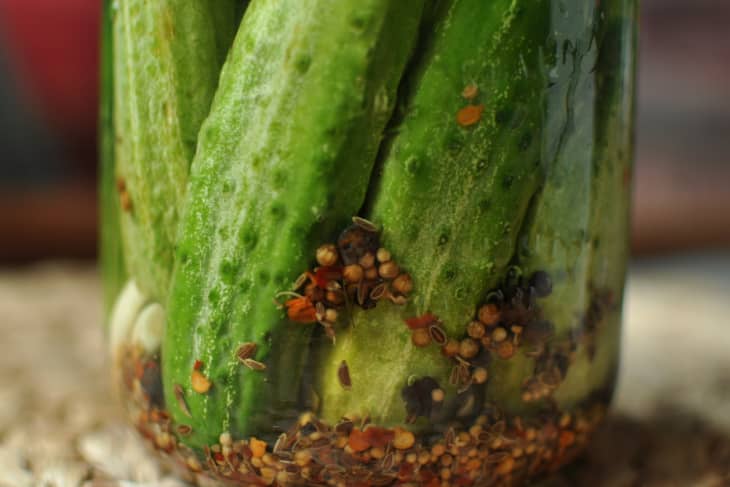5 Ways to Give Your Pickles Better Texture
We independently select these products—if you buy from one of our links, we may earn a commission. All prices were accurate at the time of publishing.
(Image credit: Apartment Therapy)
Are your garlic pickle spears limp? Do your dilly beans droop? Hopefully these tips will help you make crisper, better textured pickles!
(Image credit: Apartment Therapy)
- Use fresh produce.
Vegetables are at their very crispest and firmest when they’re fresh from the plant. Though it’s not always possible to pickle things the day they were picked, the sooner you can get your cucumbers, green beans, and okra pods into the jar, the better texture your finished pickles will have. - Trim blossom end from your cucumbers.
This tip is exclusive to cucumber pickles, but is worth stating nonetheless. The blossom end of a cuke harbors an enzyme that can lead to limp pickles. If you trim it away, you instantly improve your texture. - Watch the size of your chop.
The more you slice and mince your vegetables, they less crisp they’ll be. This is why thinly sliced bread and butter pickles are far more tender than a whole dill pickle. - Watch your processing time.
When you make a preserved pickle, it has to spend some time in the boiling water bath canner. That heat kills bacteria and ensures a good seal, but it also ends up cooking your produce a little bit. Make sure to stay right on top of your timer, to ensure that your pickles don’t spend any more time than is absolutely necessary in the canning pot. - Make refrigerator pickles.
If you can’t bear the effect that heat has on the texture of your pickles, you can skip it entirely and make refrigerator pickles. These pickles aren’t shelf stable, but will keep a good long time in the fridge.
(Image credit: Apartment Therapy)
Visit Marisa online & check out her book:
→(Images: Marisa McClellan)
